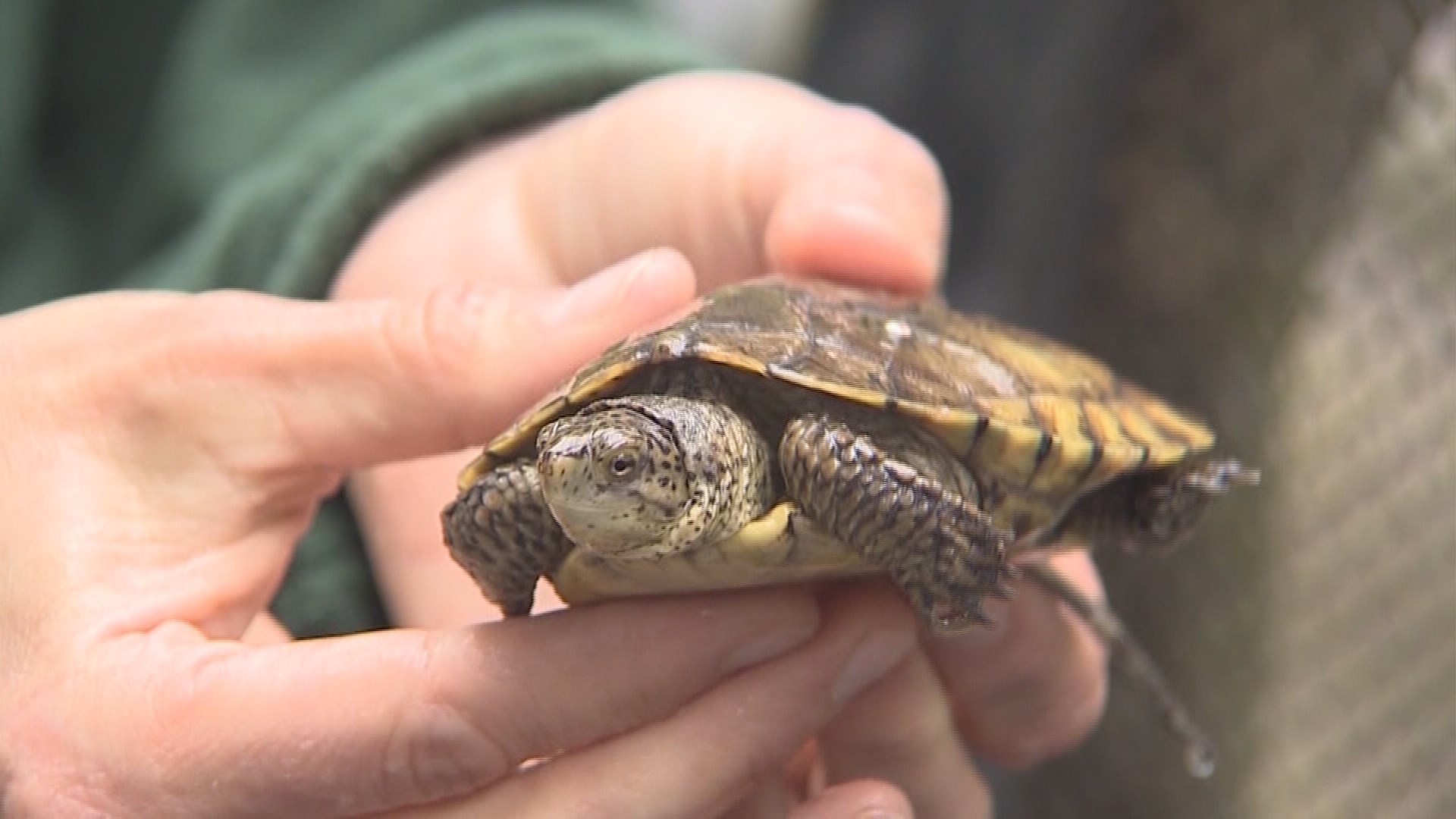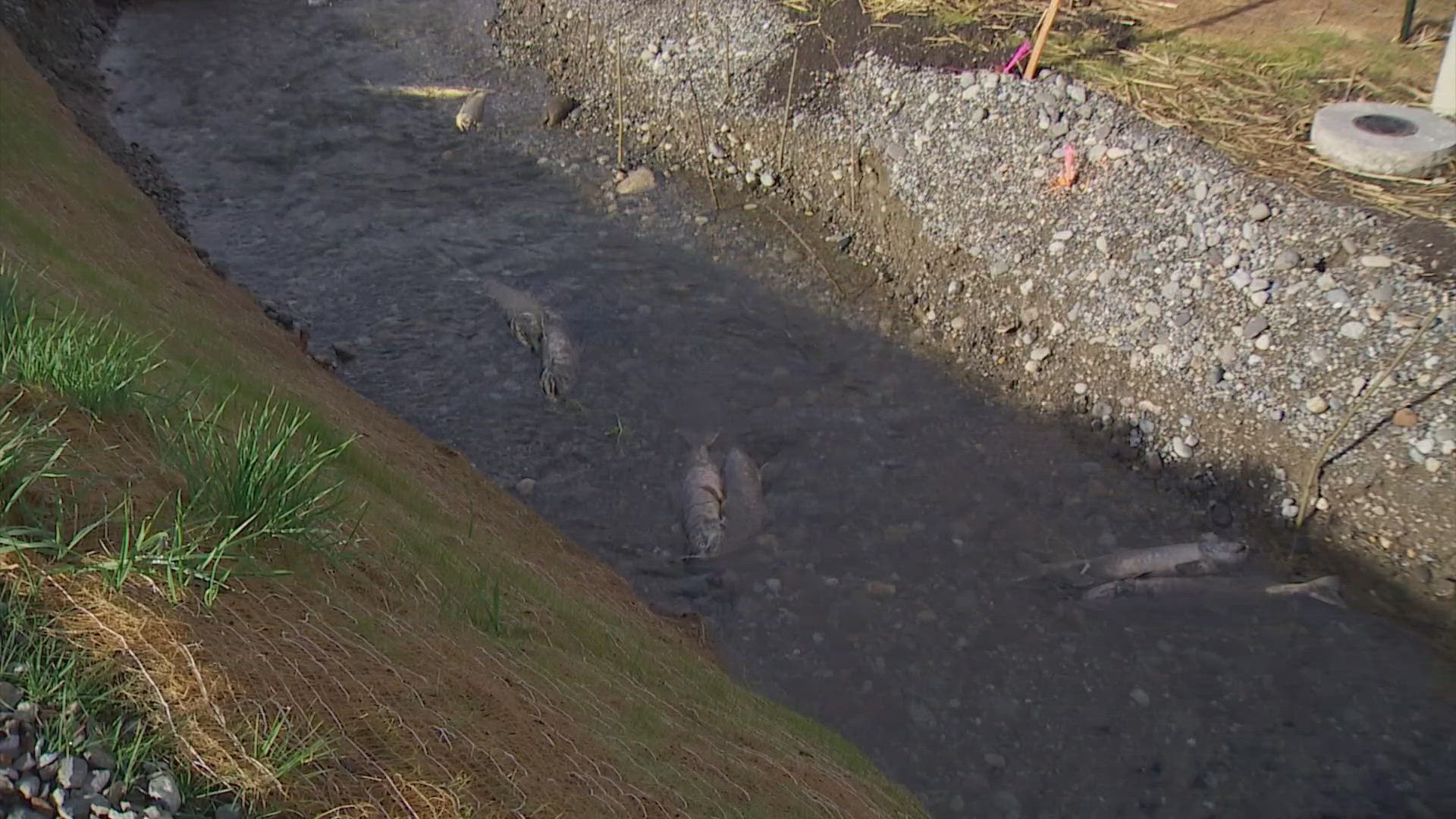Veterinarians are getting a closer look at the mysterious shell disease that is threatening two decades worth of work to save the endangered western pond turtle.
"On this turtle you can see some of the lesions and how severe they are," WDFW veterinarian Dr. Katie Haman said. "You can see my probe goes almost 2-3 centimeters down."
Dr. Haman has seen a lot of these shells, but they don't get any easier to look at. She's now looking closer than ever before. The turtles are wrapped up so they don't move and placed on CT scan machines.
The results are worse than anyone thought.
"It's shocking. It's shockingly severe. These turtles, their shells look like swiss cheese. It's amazing they're alive," Dr. Haman said.
The shell disease is threatening 25 years worth of recovery efforts to keep endangered western pond turtles from disappearing in Washington.
"By the 1980s and early 90s we were down to only two populations left in all Washington," Lisa Hallock said.
150 turtles then are now nearly 1,000 today. That's why shell disease is so alarming.
It's prompting wildlife officials to keep the turtles listed as endangered in this year's 5-year update.
"In Washington we only have two species of turtles. So, the loss of the pond turtle would be a tragic thing for the state of Washington," Hallock said.
Since its discovery a couple years ago, shell disease is still a mystery. Its cause, how it spreads, and how it can kill are all still questions veterinarians are racing to answer.
It takes a female more than a decade to reproduce and then she only lays 6 eggs. That makes recovery efforts slow and even more fragile.
Wildlife officials are asking people not to release pet turtles into the wild, as it is a known path for the spread of disease.


